22-01-17 Palo Verde Research Station
Most of the waterfowl in Minnesota (ducks, geese, herons, sandpipers) fly south for the winter. Most only go as far as they need to to escape the cold and find food, but if everyone stopped as soon as they found warmth there would be a lot of competition, so some go farther south, even to Costa Rica. The same is true for waterfowl populations from other places, and when migrating or wintering the large, productive wetlands will be full of large birds, some migrants and some residents.
Palo Verde National Park is home to a large patch of tropical dry forest full of black iguanas, scorpions, and lots of other creatures, but we were really visiting for the approximately 10,000 hectares (24,700 acres) of wetlands surrounding the delta of the Tempisque River and the Pacific Ocean. The day we arrived from Playa Hermosa we were led on a hike by a PhD student studying the effect of artificial testosterone (leaking from tilapia farms where it’s used to masculinize fish) on the sex ratio of American crocodiles. Davinia led us up to the top of La Roca, a fragment of the original sea floor that was uplifted when South America crashed into North and created Central America. Jagged slabs of limestone covered with trees and iguanas rose above the wetlands below, giving us a panoramic view of the landscape.
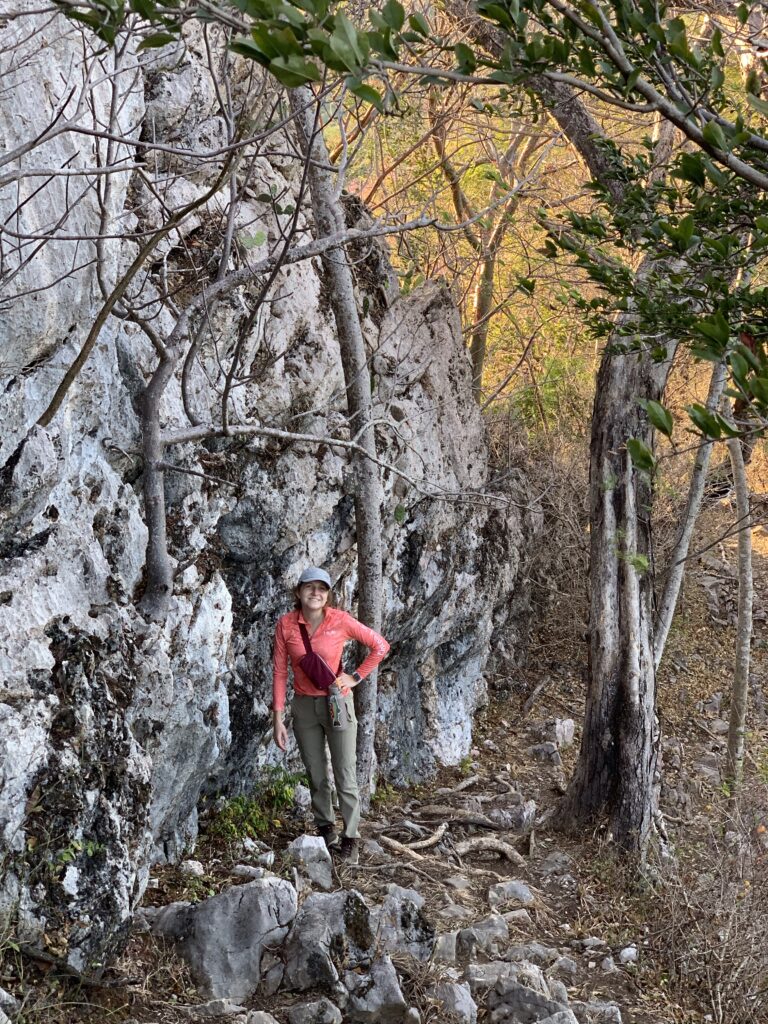
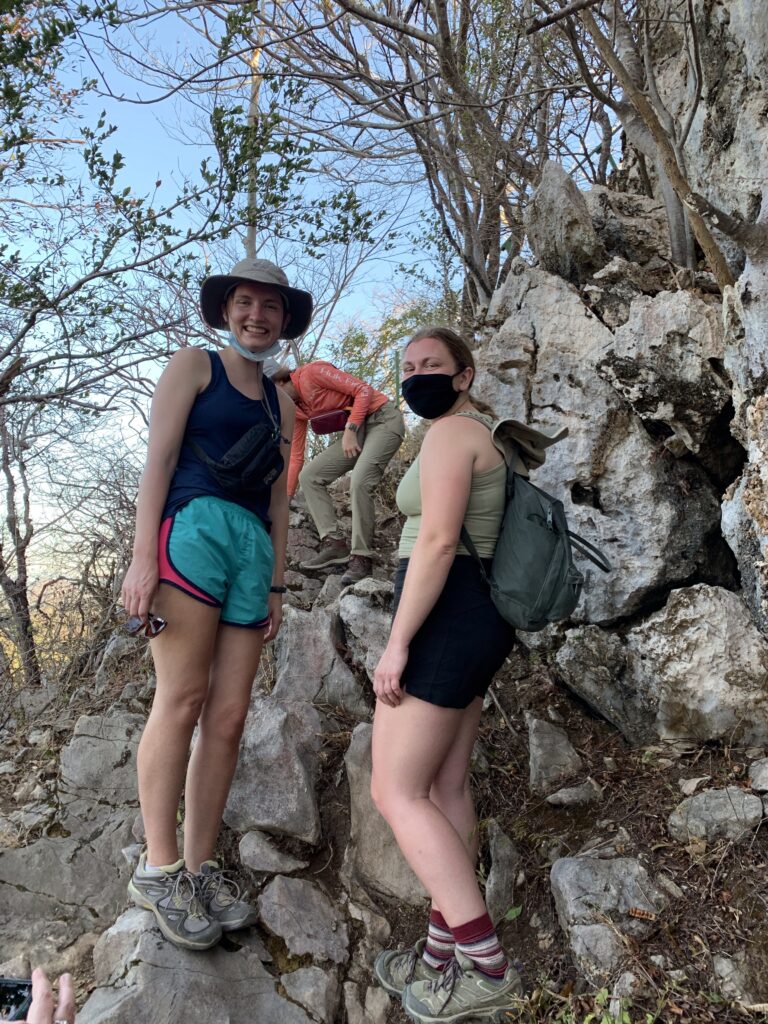

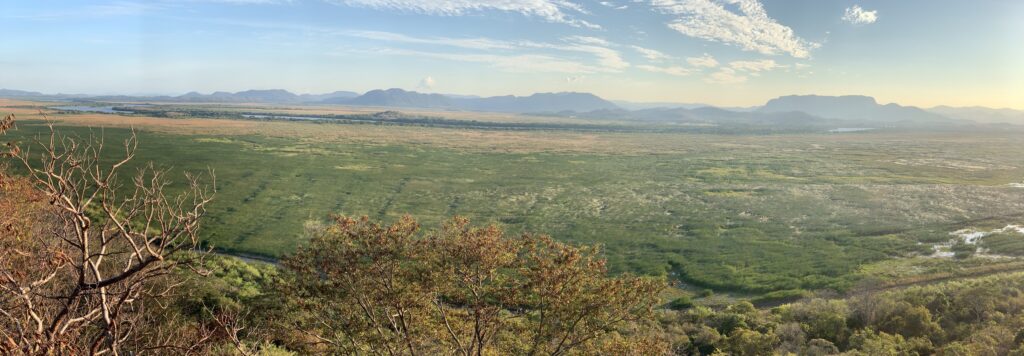
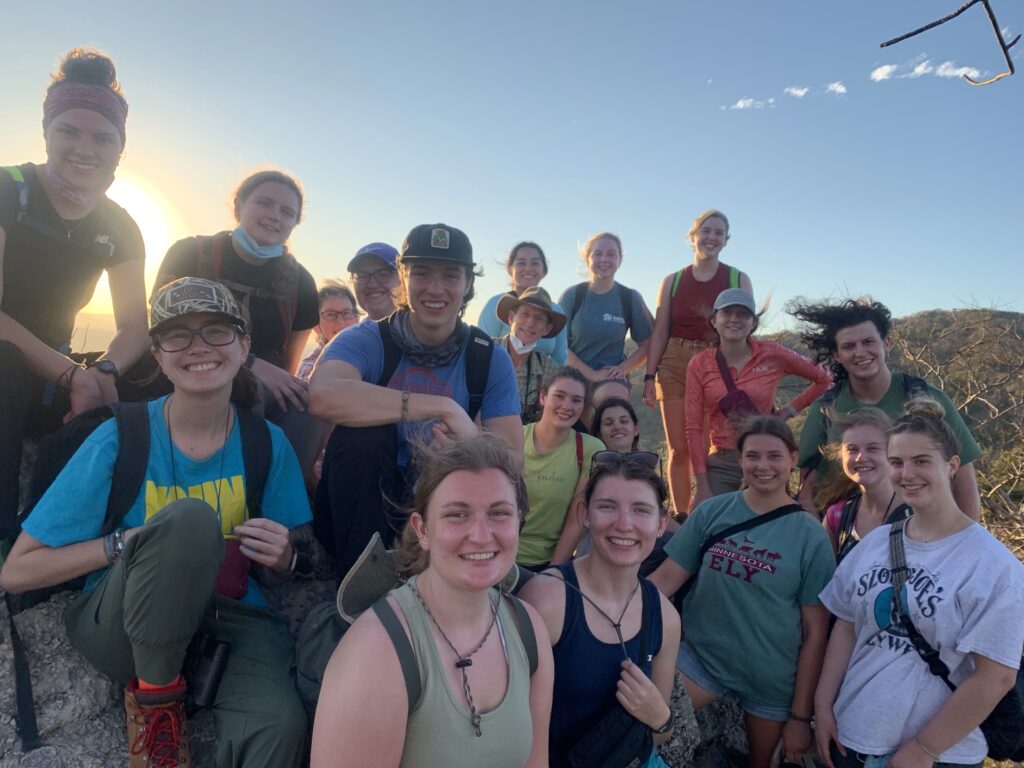
We could have stayed up top for the sunset, but chose instead to go down and walk quickly to the “boardwalk” that stretches like a dock out into the wetland.

That night some of us went back to the boardwalk after dinner and spotlighted the young crocodiles, their eyes glowing orange, and the dense clusters of Black-bellied whistling duck families. Just standing under the full moon with the wind roaring down the wetland made the trek in the dark worthwhile!
The next morning after breakfast we all went back to the boardwalk with Davinia and a spotting scope to look at the birds. We hoped to see, among other species, the endangered Jabiru (a stork that stands 5 feet tall) and Roseate spoonbills (because they’re colorful and Sarah wanted to see them). Amazingly, we saw them both!
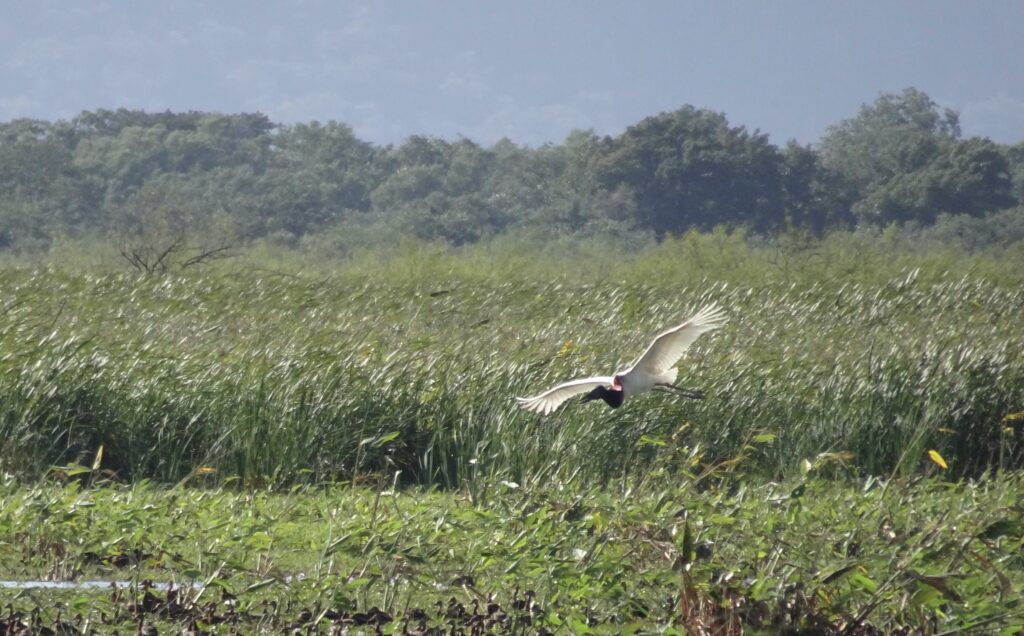
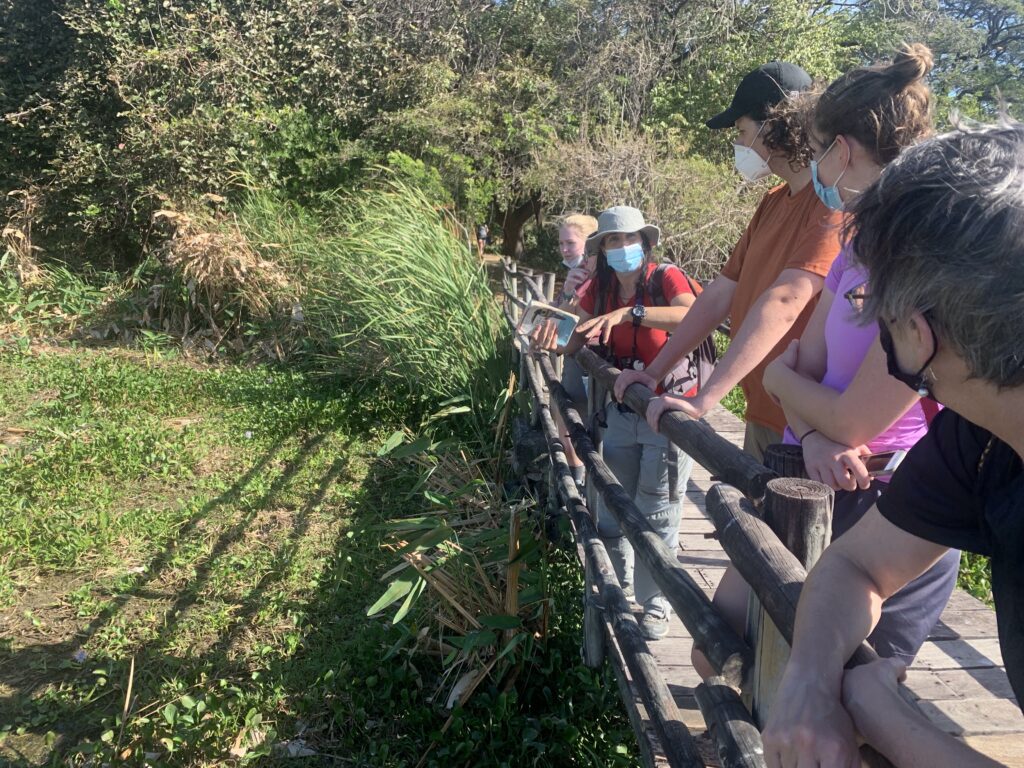
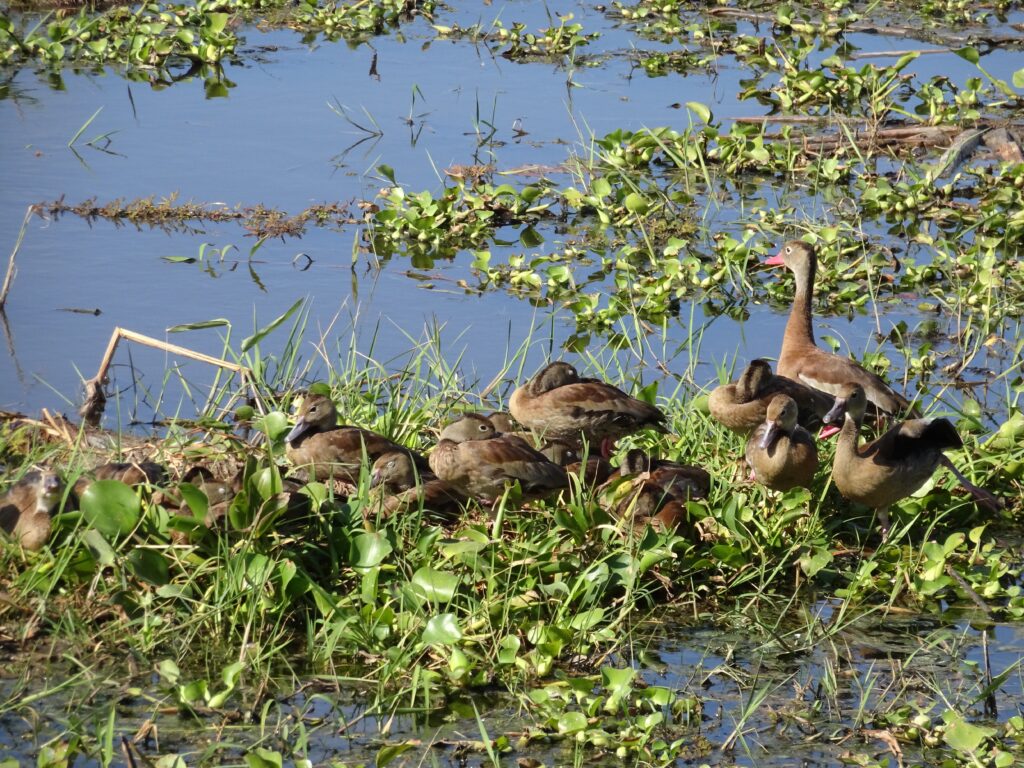
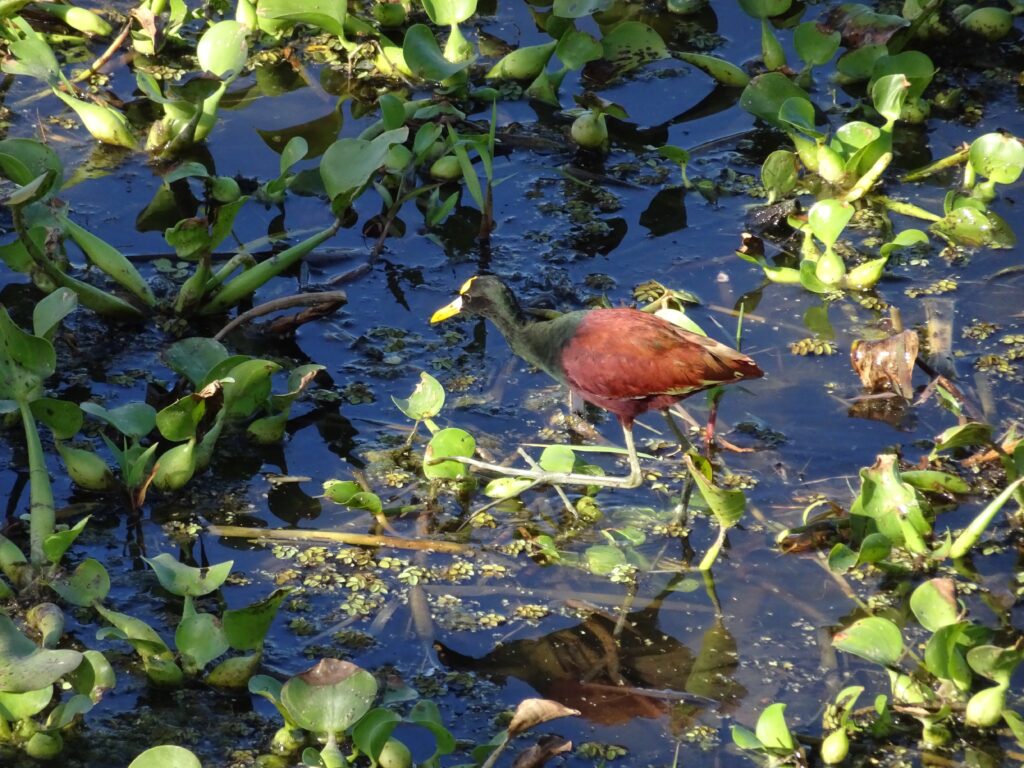
As with the other habitats we’ve explored here, the wetlands are threatened by climate change. As rainfall patterns change, with rain tending to fall more heavily and less frequently, the entire wetland system could change, and with it access to the resources these animals need.